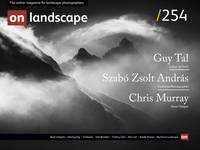John Brockliss chooses one of his favourite images

John Brockliss
John is a Brighton-based photographer specialising in reportage and landscape photography.
He studied photography, fine art and graphic design at Goldsmiths and Ravensbourne before graduat- ing as a professional graphic designer in 1972.
In a design career spanning over 40 years, John has worked with some of the most eminent designers of his generation and now dedicates his creative energies to his photographic projects.
He works exclusively with Leica-M rangefinder cameras and available light. Increasingly John works in black and white, focusing on long-term assignments and wider creative collaborations where he can explore his chosen subject, landscapes and documentary stories in depth. Simplicity underpins John’s work ethos - his images are printed uncropped as shot in-camera and avoid manipulation.
Since childhood I have been fascinated by the history of polar exploration, intrigued by the tales of adventure, the discovery of the unknown and the mortal dangers faced in the most hostile and remote landscapes on earth.
Among the heroic tales of polar discovery, there are none to compete with the plight of the ill-fated 1914 Imperial Trans-Antarctic Expedition led by Sir Ernest Shackleton in his bid to be the first to lead a team across the Antarctic Continent: a mission he never completed, for his ship the Endurance became ice-bound before reaching the Antarctic Continent proper. Overnight Shackleton’s priorities changed from discovery to saving the lives of his crew in the most challenging conditions on earth.
The story of how he did this and the saga of the 800 mile voyage across the Southern Ocean in the James Caird, a 22.5 foot open boat is one of the legendary achievements from the age of discovery.
In selecting his crew members Shackleton made one truly inspirational decision appointment of Australian Frank Hurley as the Expedition Photographer. In an age when reportage photography was still in its infancy the decision to appoint Hurley was to prove visionary. The harsh hand of fate dealt to Shackleton conversely was to provide Hurley with virgin locations, immense vistas, and unrivalled documentary subjects which when combined enabled Hurley to create one of the most astonishing historic collections of early reportage and landscape photographs of the early 20th century.

